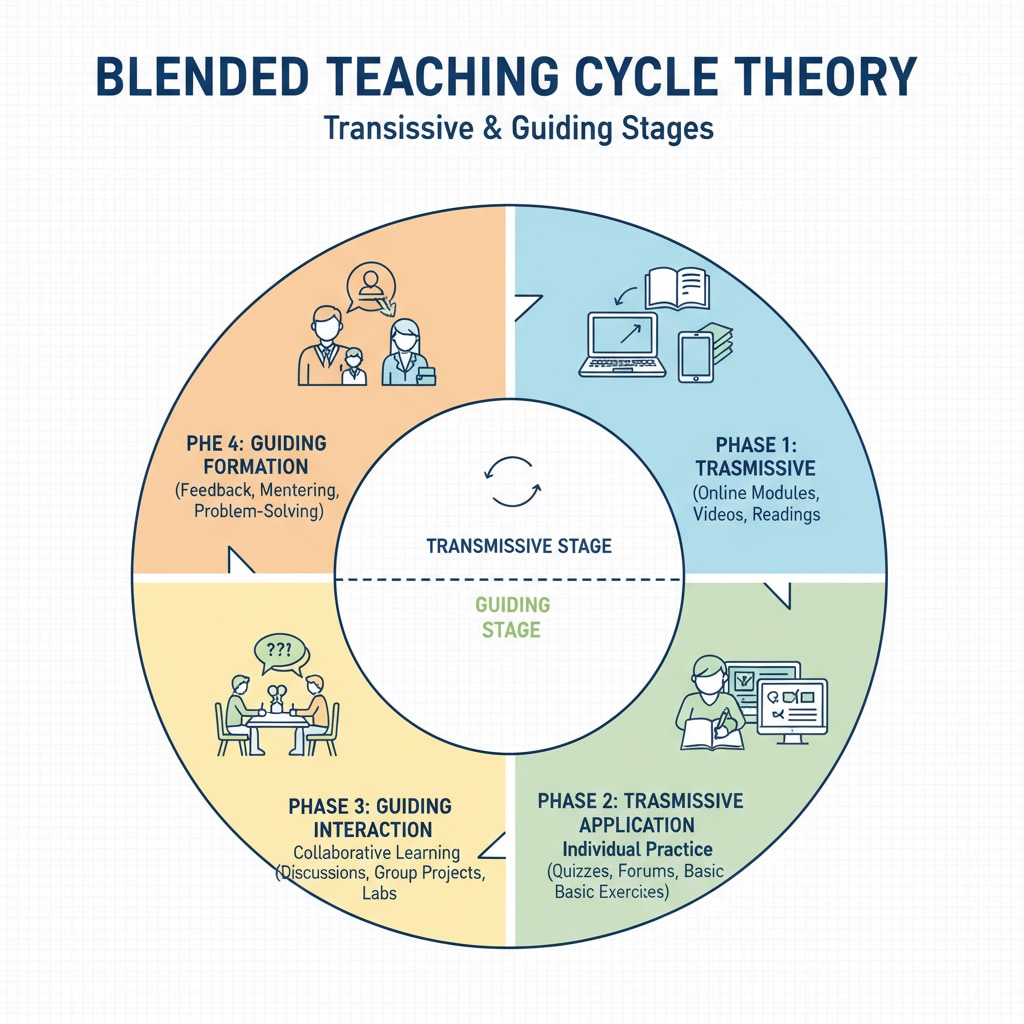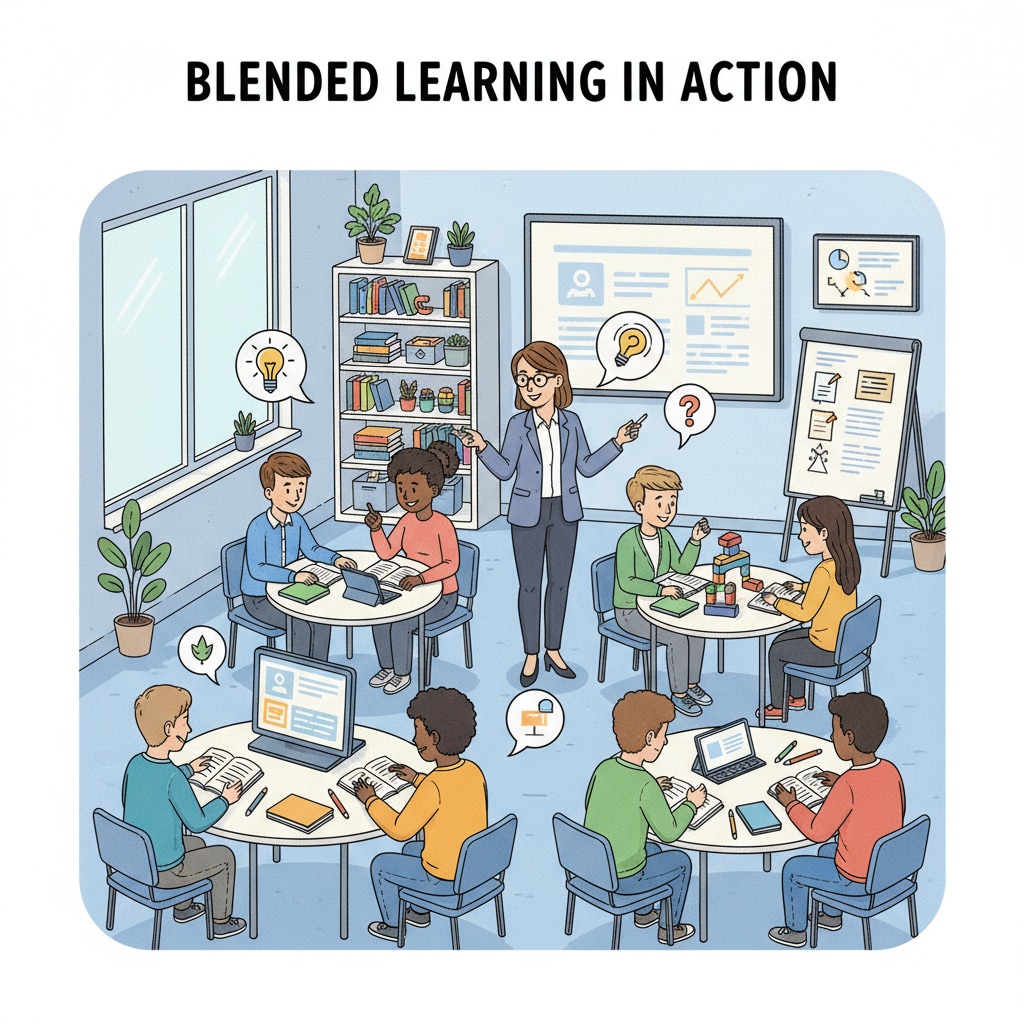The blended teaching cycle theory, a significant concept in educational theory, combines transmissive and guiding teaching methods, revolutionizing the landscape of K12 education. In today’s dynamic educational environment, this theory offers a fresh approach to meet the diverse needs of students.

The Definition of the Blended Teaching Cycle Theory
The blended teaching cycle theory is a model that integrates transmissive teaching, where instructors directly impart knowledge, and guiding teaching, which encourages students to explore and discover on their own. This cycle typically consists of phases that alternate between teacher-led instruction and student-centered activities. For example, in a math class, the teacher may first explain a new concept (transmissive teaching), and then students work on related problems independently or in groups, with the teacher providing guidance as needed (guiding teaching). According to Educational Psychology on Wikipedia, this combination aims to enhance students’ understanding and application of knowledge.

Theoretical Foundations of the Blended Teaching Cycle
There are several theoretical underpinnings for this theory. Cognitive constructivism, for instance, emphasizes that learners actively construct their knowledge. The guiding teaching part of the cycle aligns with this idea as students build understanding through their own experiences and exploration. Social learning theory also plays a role. In the collective learning aspects of the blended cycle, students learn from their peers and teachers, as described in Learning Theory on Britannica. Additionally, the need to balance structured learning and individual exploration is a fundamental concept in educational psychology, which the blended teaching cycle theory effectively addresses.
The blended teaching cycle theory has significant implications for K12 education. It helps maintain teaching structure while also catering to individual students’ learning paces. Teachers can use transmissive teaching to ensure that all students have a solid foundation in key concepts, and then utilize guiding teaching to allow students to delve deeper into areas of interest. As a result, students are not only acquiring knowledge but also developing critical thinking and self-directed learning skills.
Readability guidance: This article presents the key aspects of the blended teaching cycle theory in a clear and accessible manner. Through short paragraphs and the use of examples, it aims to make the complex concepts easier to understand. The external links provide further resources for readers to explore related topics.


